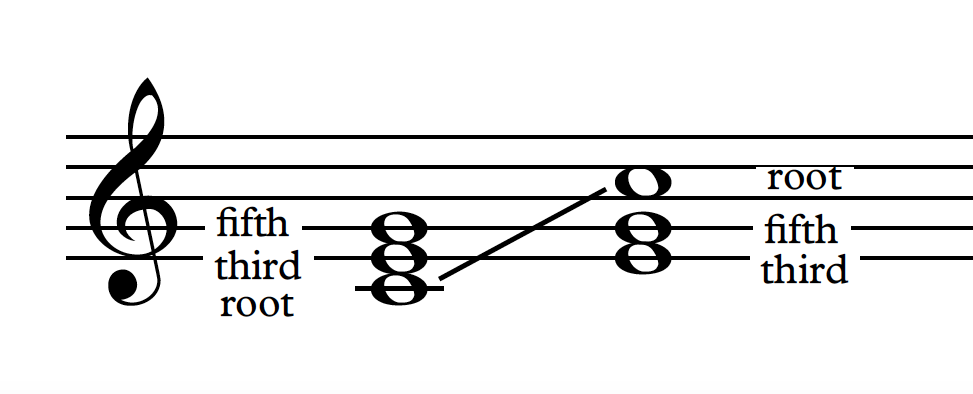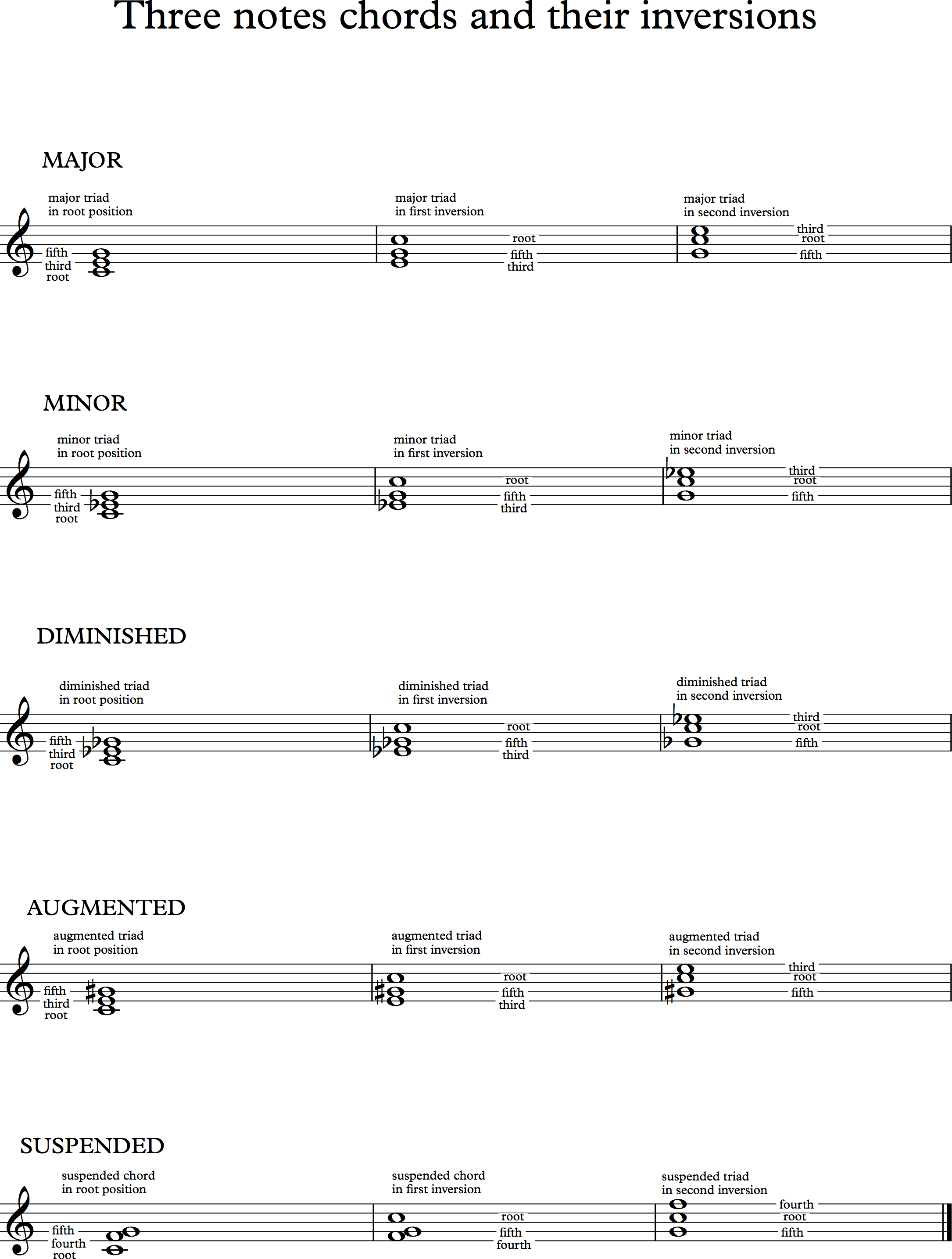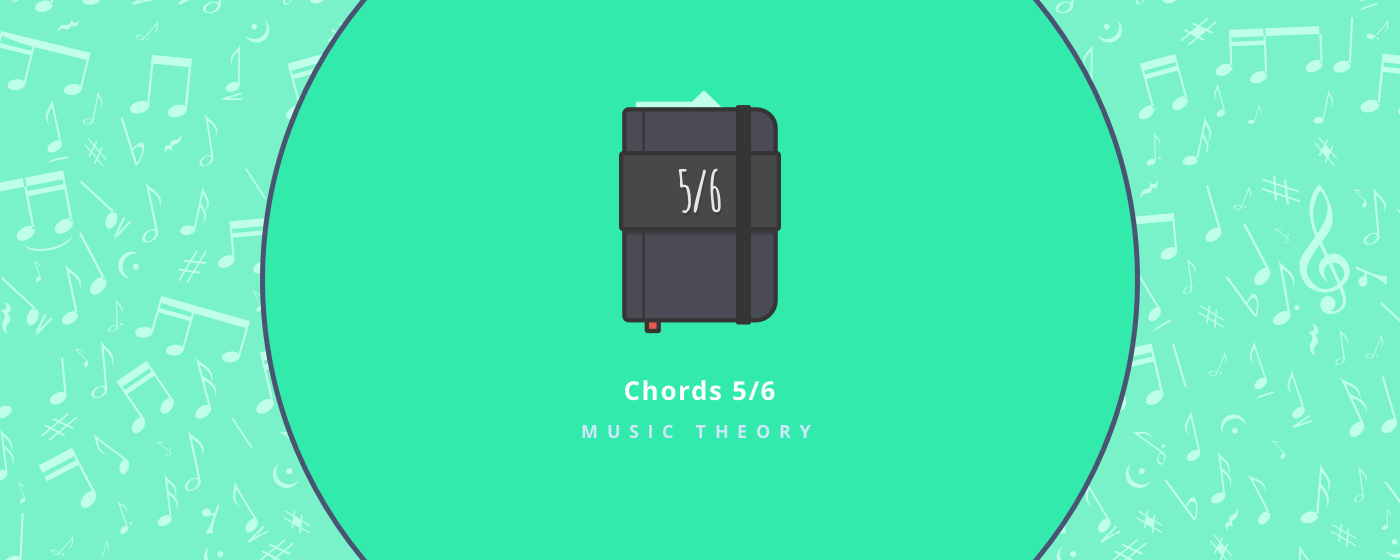Hi all,
This is the 5th post in a series of 6 posts dedicated to 3 notes chords. Please follow these links to get a quick access to the previous posts
Part 1 | Part 2 | Part 3 | Part 4
Today, we will see what happens when we change the order of the notes in chord.
This is the concept of inversion. Then, we will take a deeper look into theory, with pitch classes. Next, we will exercice our ears, with a bit of ear training. And finally, I will show you an exercise that everyone can play on his instrument.
Inversions
We will now open our ears and our mind, and discover a whole new set of sounds. We obtain those sound by changing the order of the notes in a triad.
Listen to this :
Here we have an E, a G and a C. You can check each kind of chord we have studied so far. (major triad in root position, minor triad in root position, diminished triad in root position, augmented triad in root position, sus chord in root position.) The present chord does not fall in any of this categories.Remember the definition of a triad in root position ?
A triad in root position is a chord of 3 notes that are stacked in thirds
Obviously E, G and C are not stacked in thirds. That is another confirmation that the chord we are looking at does not correspond to what we learned so far (with the addition of the sus chord, which is a special case)
But remember the definition of a triad :
A triad is a chord of 3 notes that can be stacked in thirds.
CAN we stack E, G, C in thirds ?
For sure: by changing the order of those notes. If we drop down the C, then we now have C, E, G.
Here is a stack of thirds! So, in the end, **E**, **G**, **C** is a triad.To sum it up:
E, G, C is not a stack of thirds (that is to say, we don’t have a triad in root position), but E, G, C CAN be stacked in thirds (that is to say, we do have a triad)
In the end, E, G, C is a triad.

It is important to keep in mind that E is called third, C is called root and G is called fifth. What changes here is that E is now the bass note.
So, the name of the notes in a triad do not depend of the order we choose.
In this case, the third is the bottom note, so we say this triad is in first inversion.
When the fifth is the bottom note, we call it second inversion.

Pitch classes
Now it is time we talk about pitch classes.
For those who do not like abstract theory [which I can fully understand, since it can keep us away from music], I suggest you to skip the following part.
For the others, here we go!
Pitch classes are used to discuss pitches independent of octave shift. So, any C (it can be a low C, a high C, any C ...) belong to the same pitch class. It is the pitch class of C.
Sometimes, when we say "C", we mean "any C", at any octave. That is precisely the concept of pitch class. For example, the following chord is a major triad in root position.
Why?
For this chord contains an E (actually a member of the pitch class E), a G (again, we don't care the octave corresponding to this G), and a C.
Those pitch classes can be stacked in thirds (C - E - G ) which makes it a triad, and C is the bottom note which makes this triad a "root position triad".
Here is another example :
From a pitch class point of view, those two chords are equivalent.With this example, we can see how chord theory allows us to classify families of sounds, but it doesn't tell the whole story.
Once you choose a chord, and choose its inversion, how are you going to play it? Do you want to double the bass, to play it in low register, high register? Those questions are addressed with what we call voicing (we will talk about that later).
Recap:
Here is a recap of the five 3 notes chords we learned, and their inversions.

Ear Training
Now it is time to go from theory to sound.
I cannot stress enough the importance of training your ears, and your hands. In the next section, you will see a practical exercise. This is the best way to learn and make music! And please always remember that each inversion of a chord is important.
I suggest you to practise with this excellent tool (that you probably used already when you where reading part 3). You can have it play inversions, and that is the key!
An exercise
Let me propose you an useful exercise to familiarize yourself with those 5 chords and their inversions. So take your instrument and let's play!
Here is a basic one.
It can be adapted to any chord type in any inversion.
For example, for minor triads in first inversion, this exercise would be :
I just changed 4/4 in 12/8, so as to have a lighter score. You can play it on any instrument!
Try to make your own version on this exercise (ex: play it backwards, play a descending pattern instead of the ascending one, etc.)
This course is now over and I hope you enjoyed it! Only one post left in this series of music theory articles.
See you next week,
Sebastien
Articles on this series about chords:
